Epoxy resin casting is a new pastime for many DIYers, crafters, and artists. It is not that the use of resin in these spheres is completely new, but in the last few years it has made its way to the wider public and attracted attention and enthusiasm. Discover the magic of epoxy resin with us, you will be the first to know about it on the Epoxio blog!
What is epoxy resin?
Epoxy resin is a specific two-component liquid that is created by combining resin with a hardener. After mixing them, the liquid begins to polymerize, i.e. to harden, creating a durable and permanent cast that can resemble plastic in appearance.
There are different types of epoxy resin, each with slightly different properties and used for different purposes, effects and products. On the Internet, you will most often be amazed by pictures and videos where, with the help of epoxy, artists and craftsmen produce designer furniture such as tables, coffee tables, but also clocks, serving boards, coasters, bowls, decorative lamps, jewelry, key rings, paperweights, paintings, artificial geodes and much more aesthetically interesting products.
This article summarizes the main topics that you will certainly encounter if you plan to create works with epoxy resin yourself, and you can read more about them in our Academy.
Let's introduce them!
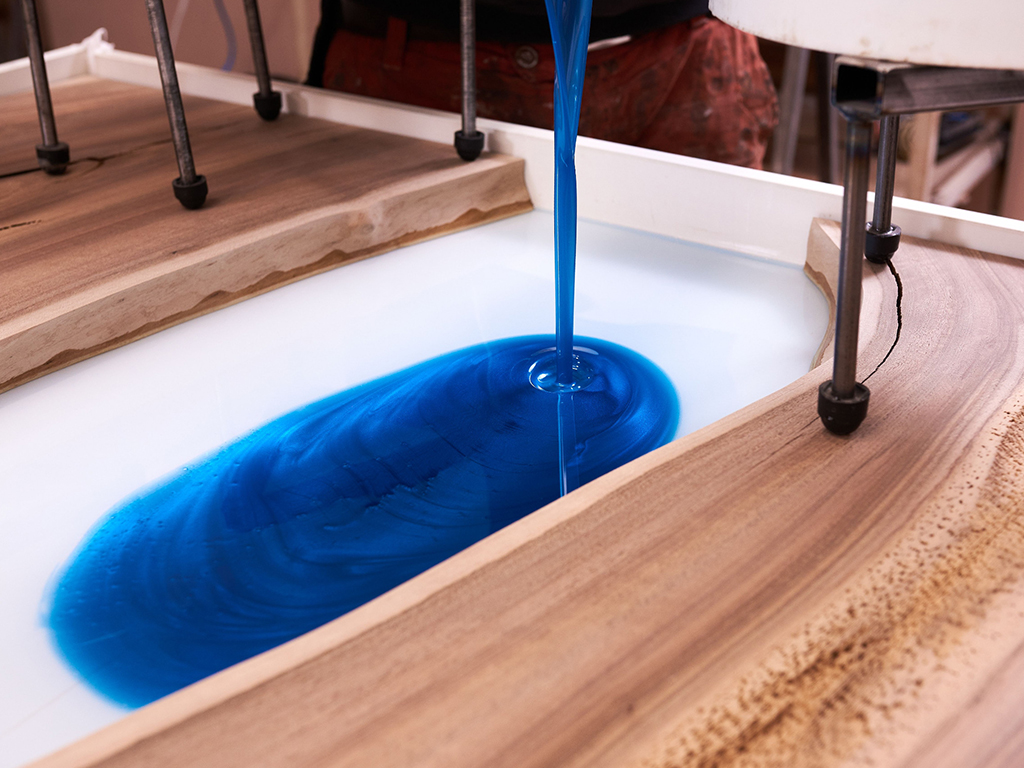
1. Casting of epoxy resin step by step
Epoxy casting is funny, and the finished products are a joy to look at. But you have to think about the fact that you are working with chemicals. Epoxy is very durable, stable and can even come into contact with food and foodstuffs, but only when it is perfectly cured and properly processed and treated. So, working safely with epoxy resin is the only proper way to work with epoxies. Your health and the health of those around you should always be a priority when working with epoxies. To avoid health risks, always strictly follow our instructions on how to work with epoxy properly. There can be many reasons for poorly cured or uncured resin, so when you are just starting out, don't hesitate to consult with more experienced colleagues in the field and read our 30 tips for beginners with epoxy resin.
Those of you who are a bit more advanced will appreciate the Practical tips for casting epoxy resin and instructions on how to cast resin without bubbles. Believe us, bubbles will be your biggest enemies with the first products.
And of course, we recommend everyone who wants to be more confident at work and quickly deepen their knowledge in the field of epoxy casting to sign up for one of our epoxy resin casting workshops and courses.
You may like:
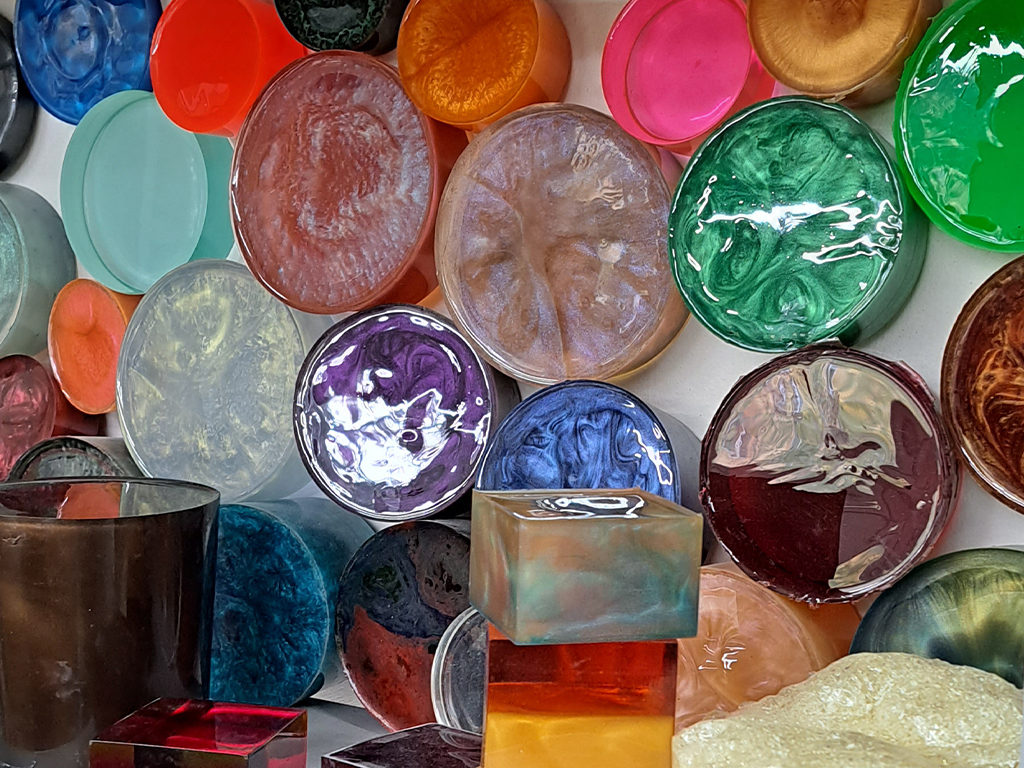
2. How to choose epoxy resin
When you already have an idea of how such casting of epoxy resin takes place, and you have at least a dozen ideas of what to create with it, you run into the problem that you don't actually know which specific product to choose for your project.
That's why we've created the article How to choose an epoxy resin as well as a Resin Comparison to give you a good insight into what to get your hands on when. Or rather gloves.
You will want to choose a suitable product according to your artistic intention. CASTING RESINS are used for river tables or cutting boards, SPECIAL RESINS for paintings and artificial geodes, WOOD STABILIZATION RESINS, LAMINATION RESINS and FLOOR RESINS are more likely to be used by craftsmen or do-it-yourselfer.
The choice of a specific product therefore always depends on the purpose for which you are looking for the resin.
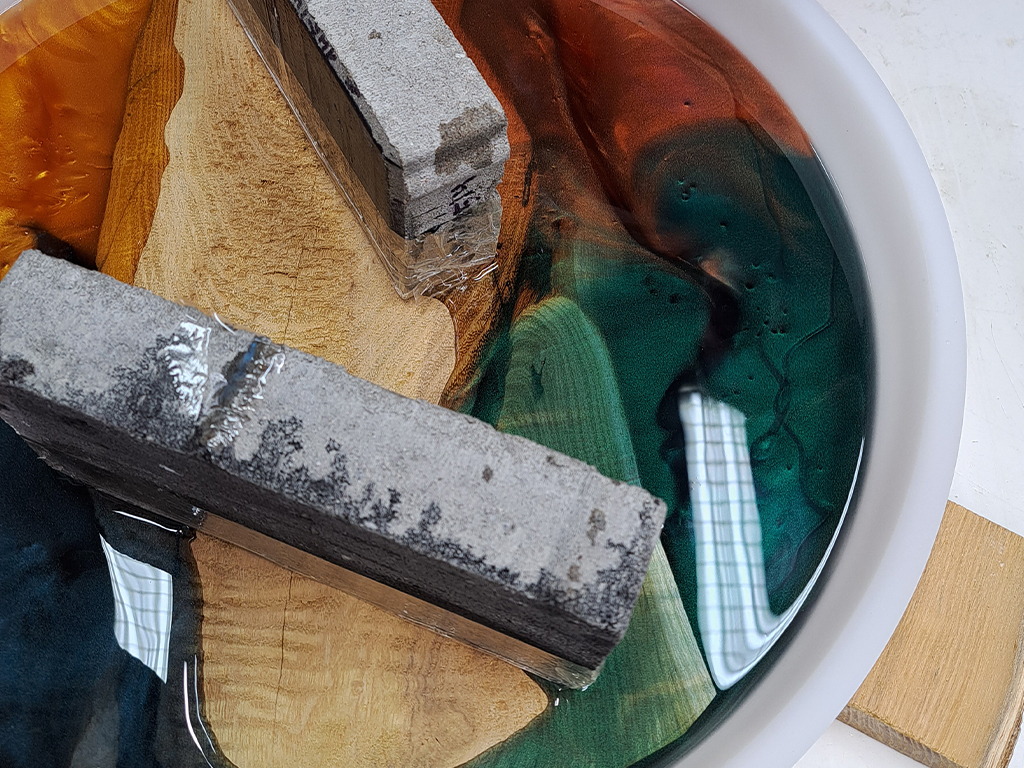
3. TECHNIQUES, INSTRUCTIONS AND PROCEDURES FOR CASTING OF EPOXY RESINS
There's so much to say about epoxy resin casting itself that it deserves its own big topic (number 1), but there are still plenty of specific instructions and procedures you'll find useful when working with epoxy. One of the most important is to know how to calculate the epoxy consumption for your project and the related handy calculator to calculate the weight and ratio of epoxy resin.
Never forget that it is crucial to have the epoxy resin properly mixed, the components in it perfectly measured, and that impatience waiting for the casting to completely harden can cost you a lot of time and money if you want to remove the product from the mold prematurely.
Sooner or later you will probably ask yourself the question of how to make an epoxy resin casting mold and how to sand and polish the epoxy resin after the casting is finished.
The more advanced of you who have already tried your first epoxy may want to know how to work with epoxy in hot weather as well as how to increase the UV resistance of an epoxy product, because when you are embarking on larger and more expensive projects, you want to do your best so that you not only succeed in your work, but also that the result is worth it and lasts a long time.
In the field of techniques and procedures, you may be interested in:
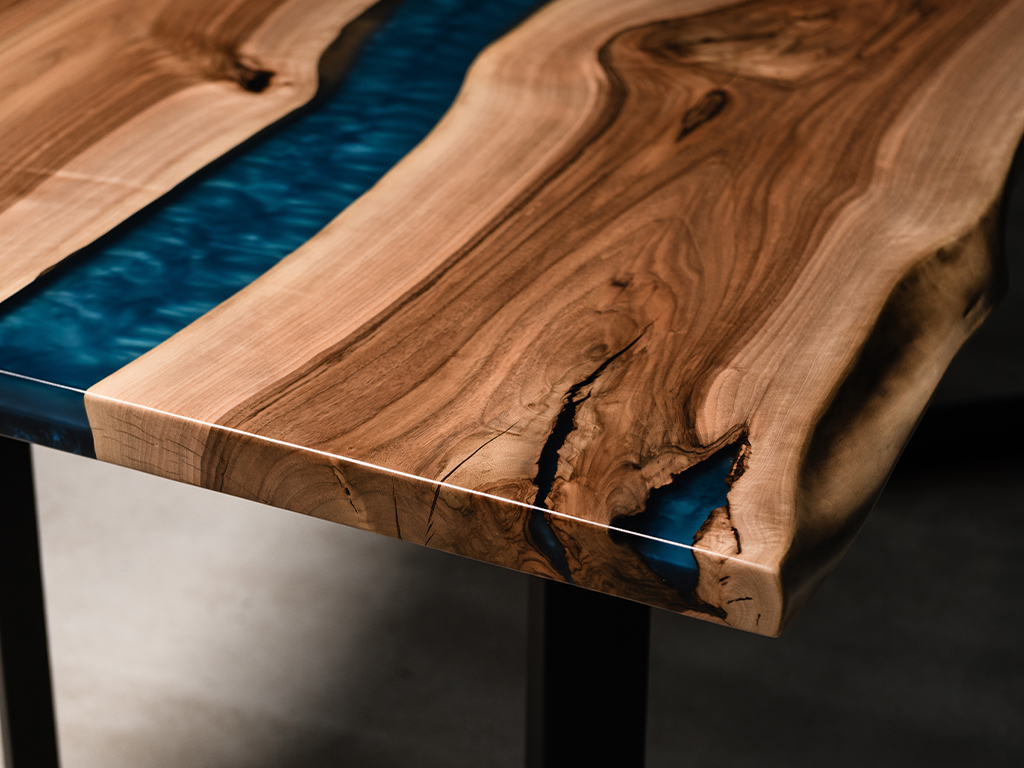
4. WOOD FOR CASTING WITH EPOXY RESIN
You can create products only from epoxy, but very often you will come across a harmonious combination of wood with epoxy resin. For example, making a table from epoxy resin step by step is the dream of any do-it-yourselfer and a nice bonus is how such a product is used in the interior.
WHEN CHOOSING WOOD FOR YOUR PROJECT, in the beginning it is best to play it safe and get planks, boards, pies, sets for epoxy tables, blanks for clocks or prisms for jewelry properly dried with 8-10% moisture, leveled and sanded with 80 grit. This wood is only ready to be inserted into the mold.
As if working with epoxy wasn't enough of a challenge in itself, even wood can be a surprise from time to time. You will therefore find the article How to simply straighten bent or twisted wood, how it is with WOOD PENETRATION and the best way to protect the wood while preserving its original appearance.
But don't worry, you don't – and probably shouldn't – necessarily start your epoxy journey right away with a massive table. It's better to try joining wood and epoxy in a smaller project first. Even a single kitchen cutting board will take a lot of work at first.
You may also be interested in the topic of wood for creating from epoxy resin:
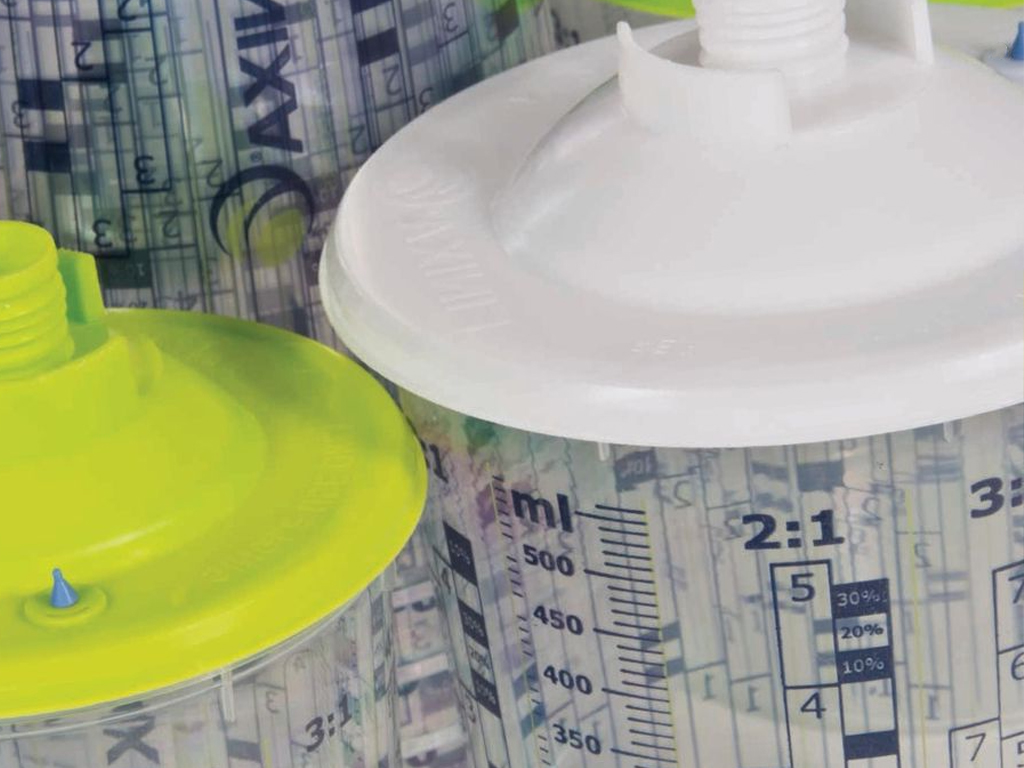
5. Tools and supplies for working with epoxy resin
Newbies to casting always wonder what is actually needed to work with epoxy resin. We refer them first and foremost to our Epoxy Starter Pack filled with the essentials they can't live without. Once they "get a feel" for this foundation, they can move on. In addition to the basic PROTECTIVE EQUIPMENT FOR CASTING EPOXY RESIN (nitrile gloves, safety glasses and a respirator especially for grinding, etc.), you will certainly welcome the necessary ACCESSORIES FOR CASTING such as spatulas, beakers or perhaps tapes, and you will also be interested in our practical TOOLS section.
SEPARATORS AND MOLDS are somewhat optional and subjective to everyone, as it depends a lot on what you plan to make of the epoxy and if you can make a DIY mold.
Sooner or later, everyone will learn to use the appropriate ABRASIVE FOR WOOD AND EPOXY. It is precisely the perfect sanding that can raise your epoxy work to a new level. Related to this are products for SURFACE PREPARATION (oils, waxes, varnishes...) that will help fix your creation and keep it in flawless condition for a long time.
Well, if something were to happen to your work, we also have the GLUES AND EPOXY REPAIR category ready for you.
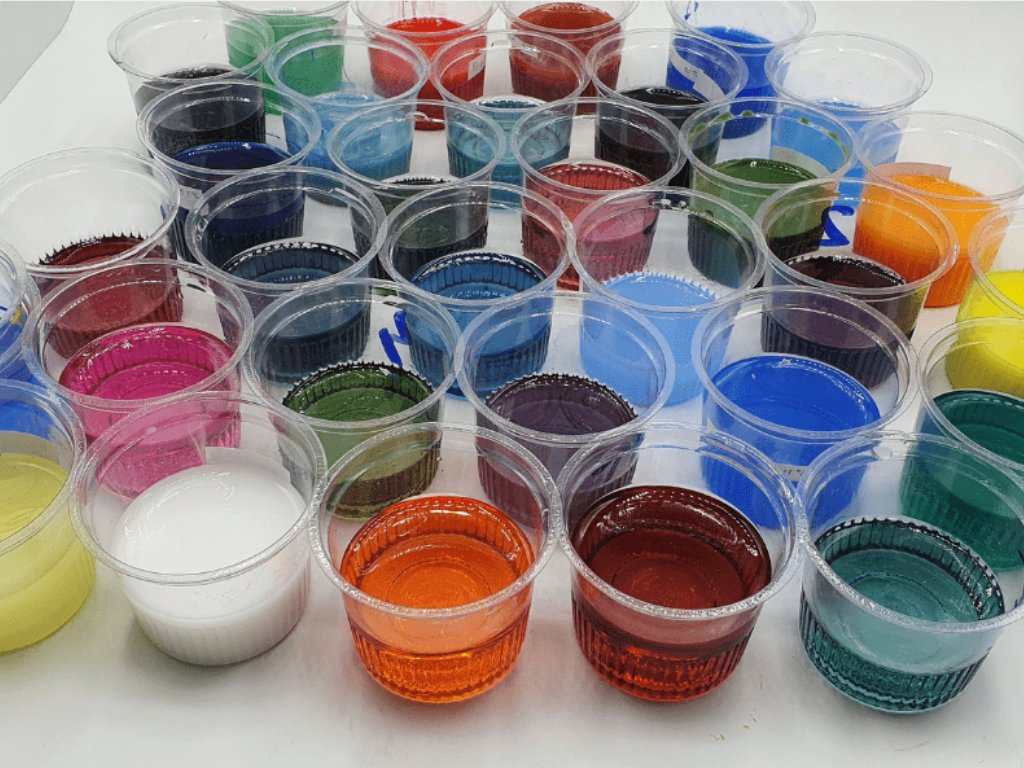
6. Pigments and dyes for creating from epoxy resin
And finally, one of the most pleasant topics remains. HOW TO CHOOSE PIGMENTS AND DYES FOR EPOXY is more a matter of taste and intention, but it's always fun. While the inks color the epoxy but leave it partially transparent, the epoxy pigments impart a magical opaque effect. For more demanding projects, we also have WOOD STABILIZING DYES prepared, which gives the wood a rich color throughout the entire cross-section and is especially suitable for, for example, knife handles, axes and similar products.
Epoxio wasn't founded just to sell you resin and other epoxy casting supplies. We ourselves are enthusiasts of working with epoxy, we test all products together with you, we create with them, and we enjoy being part of a wide community of artists and DIYers who are not afraid to experiment with their imagination and go all out in epoxy casting.
At the workshops, you will see that, in addition to a personal approach, we also share personal experiences and practical tips, which is also reflected in our articles and posts on social networks. So we're here with you and for you, so don't hesitate to contact us anytime you need epoxy casting advice.




